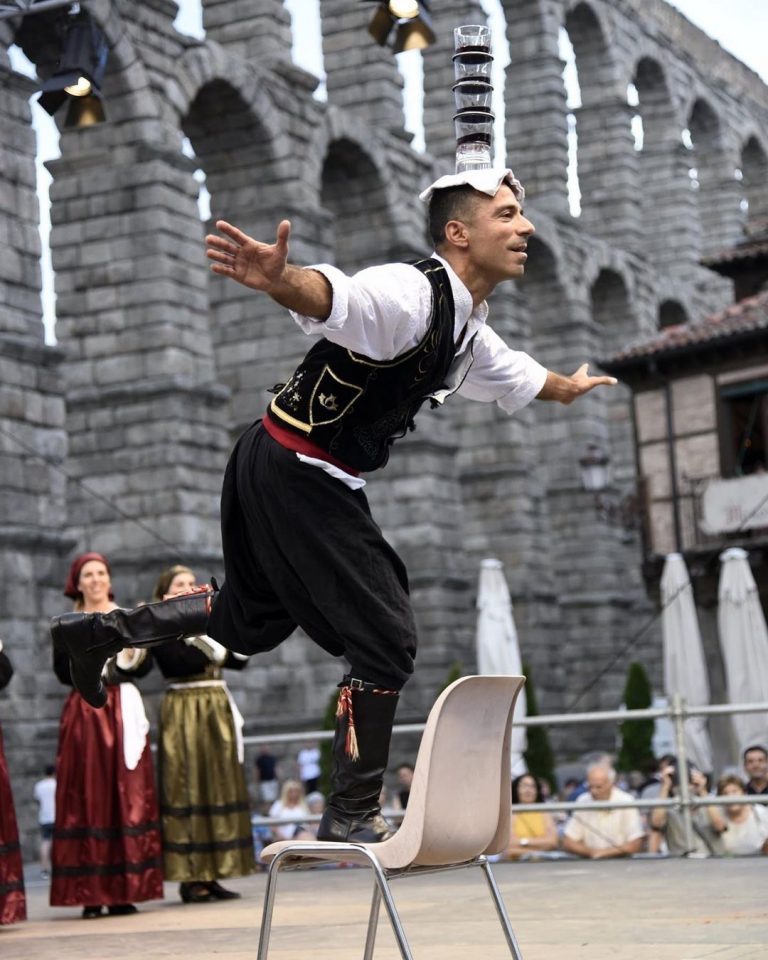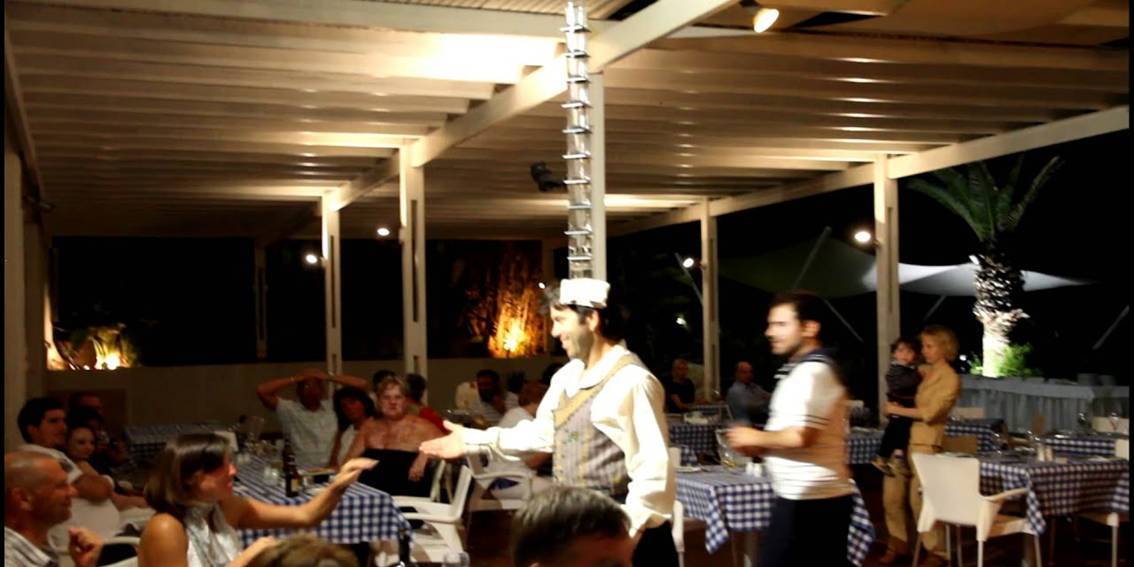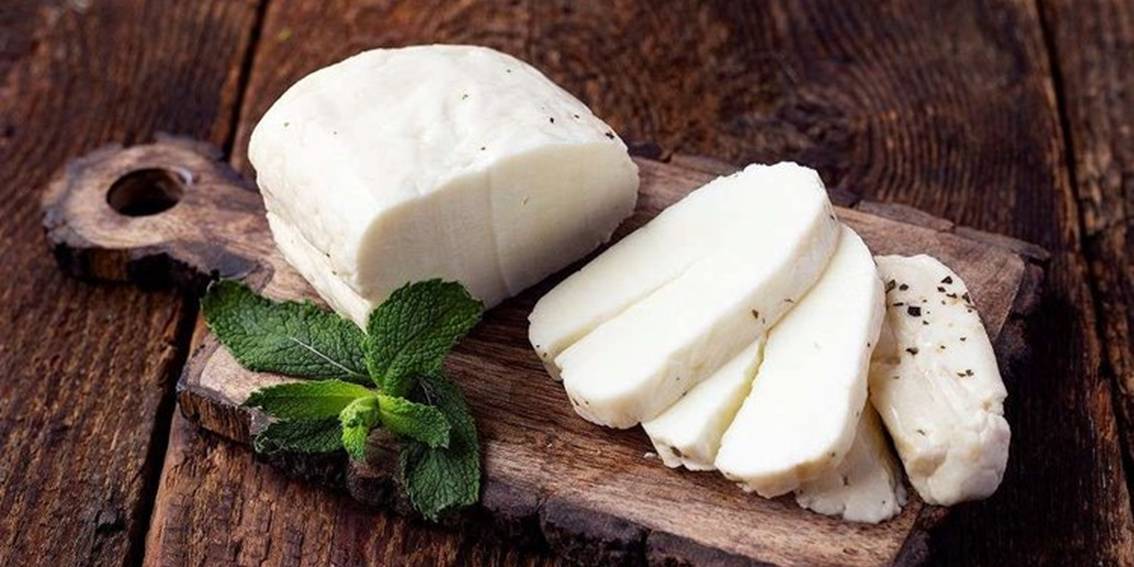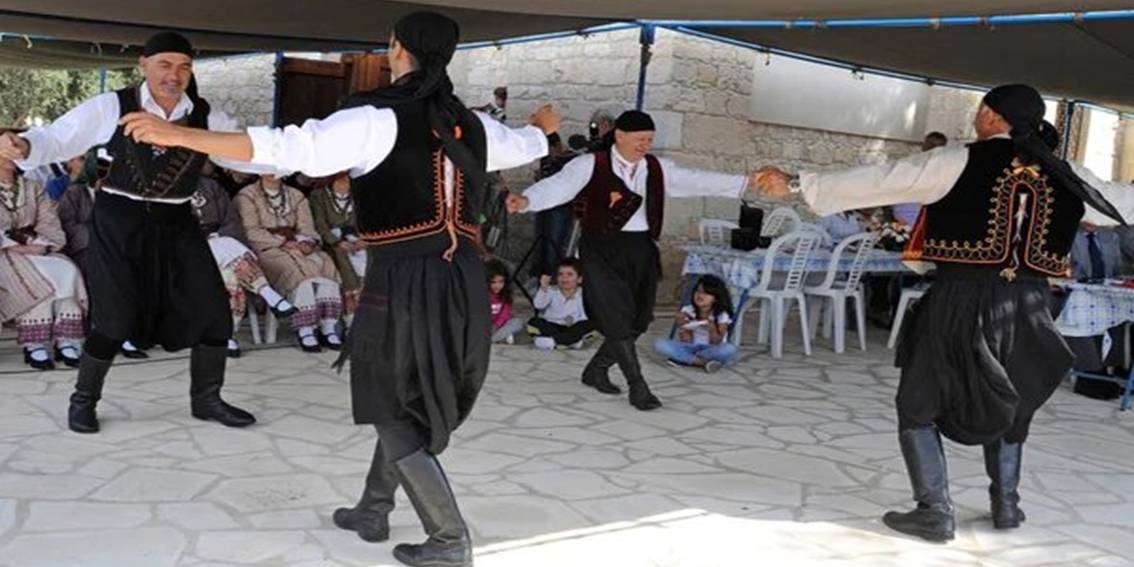A Traditional Folk Dance From Cyprus
The Potiri Dance, also called “Potiroudkia,” is a traditional folk dance from Cyprus. It is celebrated for its unique blend of cultural history and rhythmic complexity. The dance reflects the rich heritage of the island. The word “potiri” means “glass” or “goblet” in Greek. Dancers balance a glass or goblet during their performance, showcasing their agility and coordination.
Performance and Skill
The Potiri Dance is often performed at weddings, festivals, and other celebrations in Cyprus. It is a display of skill and dexterity. Dancers balance a glass on their heads or hands while executing intricate steps. Keeping the glass steady during dynamic movements demonstrates the dancer’s balance and concentration.
Accompanied by Traditional Cypriot Music
The dance is typically accompanied by traditional Cypriot music. Instruments like the violin, lute (laouto), and tambourine create upbeat and rhythmic melodies. The music drives the dancers’ movements and enhances the festive atmosphere. These melodies and rhythms are deeply rooted in Cypriot culture. They are often passed down through generations and add to the dance’s overall experience.

Traditional Costumes
Dancers often wear traditional Cypriot costumes during the Potiri Dance. Women typically wear long, colourful dresses with intricate embroidery. Men wear traditional attire, including a vest, shirt, and baggy trousers called “vraka.” These costumes add to the dance’s visual splendour. They also reflect the island’s cultural heritage.
Traditional Costumes
Dancers often wear traditional Cypriot costumes during the Potiri Dance. Women typically wear long, colourful dresses with intricate embroidery. Men wear traditional attire, including a vest, shirt, and baggy trousers called “vraka.” These costumes add to the dance’s visual splendour. They also reflect the island’s cultural heritage.
A Cultural Tradition
The Potiri Dance is more than just a dance. It is a cultural tradition that embodies the spirit and resilience of the Cypriot people. The dance brings communities together. It serves as a reminder of their shared history and cultural identity. Families often teach the dance to younger generations. This ensures the tradition continues to thrive.
Conclusion
In modern times, the Potiri Dance has gained international recognition. It is often featured at folk dance festivals and cultural events worldwide. The dance’s captivating blend of balance, music, and cultural expression makes it a compelling representation of Cypriot heritage. The Potiri Dance remains a cherished and dynamic part of Cyprus’s cultural landscape. It celebrates the island’s history and the skill of its dancers.




